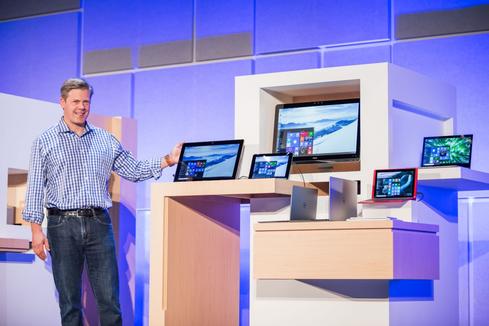Microsoft Surface Hub Gets Launch Date, Price
Businesses can start ordering the Microsoft Surface Hub July 1 for a starting price of $6,999.


Windows 10: Sneak A Peek At Your Future PC
Windows 10: Sneak A Peek At Your Future PC (Click image for larger view and slideshow.)
Microsoft has released the pricing and preorder availability for its new Surface Hub, a smart productivity tool designed to replace whiteboards in conference rooms everywhere.
Businesses can start to order the Surface Hub on July 1; global shipping will start in September. The 55-inch model, designed for smaller conference rooms and offices, is priced at $6,999. A larger 84-inch display for larger meeting rooms will cost $19,999.
We've been hearing about the Surface Hub and its myriad capabilities since it was first unveiled at Microsoft's Windows 10 event back in January. The device aims to boost collaboration in the same way that the Surface tablet improves personal productivity.
[Windows 10: 5 Key Features For Business]
The Surface Hub is intended to serve as a multipurpose device in an office or conference room for individual or group work. Users can interact with the device on its own, or they can use it as a central display for individual tablets or PCs. All interaction is conducted via Windows 10 interface, where central information is in the middle and meeting controls are off to the side.
There are plenty of "smart" features integrated in the Surface Hub that could contribute to seamless group productivity. Meeting participants can write on the display or annotate images from a connected PC or tablet. The screen is designed to recognize the difference between fingers and digital pens, so a presenter can manipulate content by hand and annotate with a pen. This can be done in any of the Office apps, which are available on the Surface Hub.
The smart display can also make or receive Skype for Business calls, as mentioned by Microsoft Office general manager Julia White during this year's Microsoft Ignite event. Skype can be used to write and edit text, invite participants, and collaborate via videoconference. Participants can co-author documents and view pixel-by-pixel activity in real time.
Transparency and security were both critical in development of the Surface Hub. The device does not store data and as a result does not require users to be authenticated before use.
Upon the conclusion of a meeting, the host clicks "I'm done" to automatically save all meeting content to OneDrive for Business. Notes and results are also emailed to each participant via Microsoft Exchange. The device goes blank so that non-attendees cannot access information produced or discussed during the session.
In addition to the evident benefits for business teams, the Surface Hub will also streamline processes for IT teams, notes Microsoft. An average conference room is packed with equipment like a display, projector, analog or digital whiteboard, audio/video-conferencing system, and wireless receiver. All of these require individual maintenance and updates.
The Surface Hub, which has all of these technologies in one device, can be centrally managed. As a Windows 10 product, it will also receive updates via Windows Update for Business, which delivers new features and security fixes on an ongoing basis.
About the Author
You May Also Like






